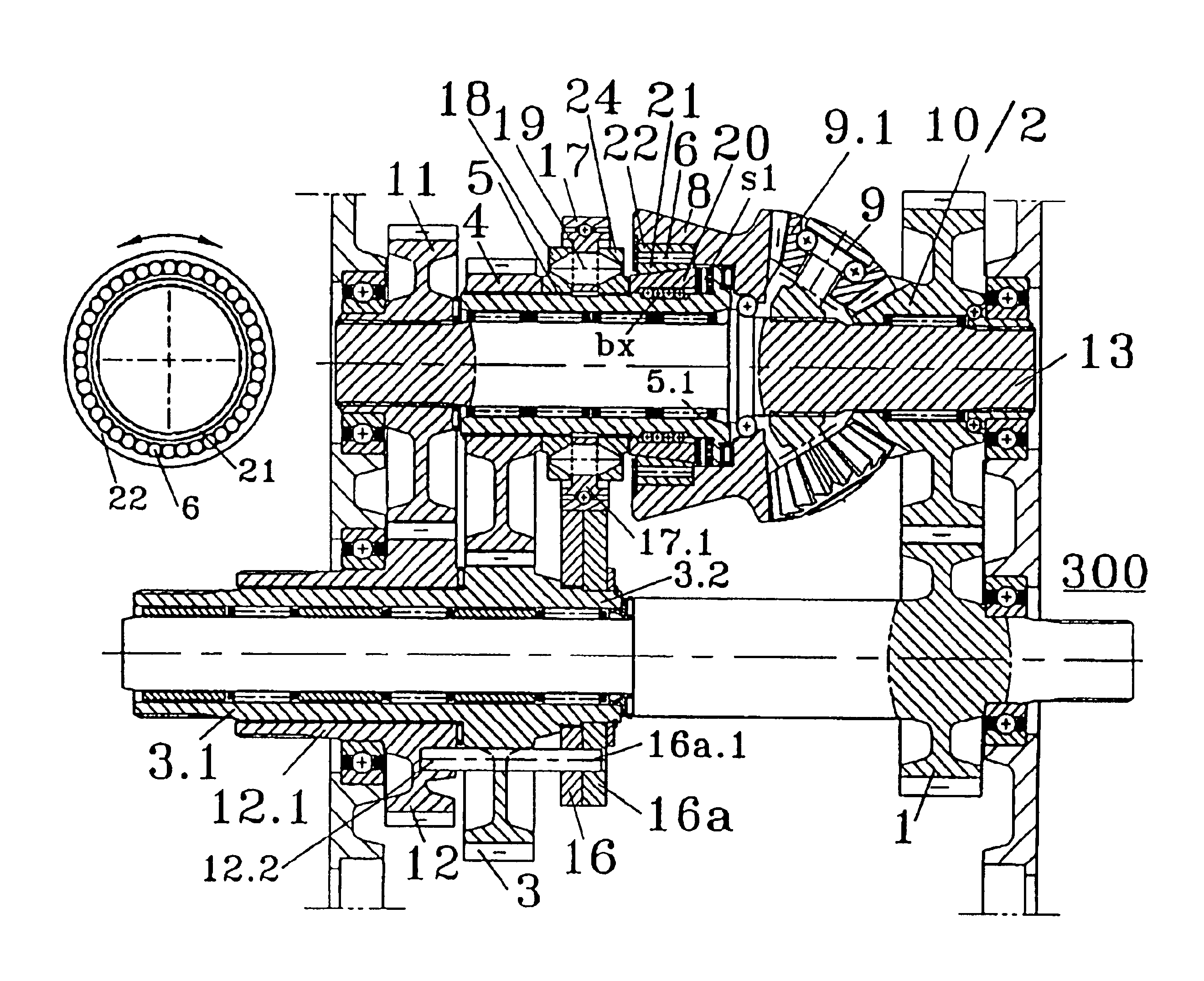All gear infinitely variable transmission
a transmission system and all gear technology, applied in the direction of toothed gearings, belts/chains/gearings, portability lifting, etc., can solve the problems of inefficient torque transfer between the input and output shafts, the efficiency of the engine cannot be maximized for any particular operating condition, and the limitation of the torque which can be carried by the gear system, etc., to achieve uniform velocity ratio
- Summary
- Abstract
- Description
- Claims
- Application Information
AI Technical Summary
Benefits of technology
Problems solved by technology
Method used
Image
Examples
first embodiment
Turning now to FIGS. 2, 2a, one variable-ratio gear assembly of an infinitely-variable transmission 100, according to the present convention, is shown. As above, the transmission 100 includes four identical variable-ratio gear assemblies which are disposed preferably at equal angular intervals around the input shaft 3.1 and the output shaft 1.1, although they may be disposed at unequal angular intervals with a possible reduction in performance. For convenience, only one variable-ratio gear assembly is shown.
The infinitely-variable transmission 100 comprises a “bevel-bevel”-type transmission, similar in structure to the infinitely-variable “bevel-bevel” transmission shown in FIGS. 1, 1a. However, unlike the “bevel-bevel” transmission shown in FIGS. 1, 1a, the cage 5 of the one-way overrunning clutch is replaced with a sleeve 5.1 provided around the intermediate shaft 13 and splined to the first non-circular driven gear 4. Also, each variable-ratio gear assembly of the transmission 10...
second embodiment
FIG. 2c shows an infinitely-variable “bevel-carrier” transmission 200, according to the present convention. The infinitely-variable transmission 200 is substantially identical to the “bevel-carrier” transmission shown in FIG. 1c, except that the cage 5 of the one-way overrunning clutch is replaced with a sleeve 5.1 provided around the intermediate shaft 13 and splined to the first non-circular driven gear 4, and the one-way overrunning clutch is replaced with a programmable multi-directional coupling and an cam-follower actuator. As shown in FIG. 2d, the amplification of the transmission shown in FIG. 2c has a changed to 300% in both directions, which again represents a dramatic improvement over the prior art.
FIG. 2e summarizes the non-circular gear pairs for the “bevel-bevel” transmission 100, and the “bevel-carrier” transmission 200. Diagrams a) and b) of FIG. 2e depict the first and second non-circular gear pairs for the “bevel-bevel” transmission 100. The first non-circular gear...
third embodiment
Numerous variations of the foregoing embodiments may be realized. FIG. 2f shows an infinitely-variable “bevel-carrier” transmission 300, according to the invention. The “bevel-carrier” transmission 300 is substantially identical to the “bevel-carrier” transmission shown in FIG. 1e, except that the cage 5 of the one-way overrunning clutch is replaced with a sleeve 5.1 provided around the intermediate shaft 13 and splined to the first non-circular driven gear 4, and the one-way overrunning clutch is replaced with a programmable multi-directional coupling and an cam-follower actuator. Due to the 2:1 gear ratio of the differential, the first and second non-circular gear pairs can produce the same angular acceleration. The amplification characteristics of the transmission 300 are similar to those the transmission shown in FIG. 1e in so far as the transmission 300 is capable of producing infinite translation. As will be discussed below, this feature is advantageous when the transmission 3...
PUM
 Login to View More
Login to View More Abstract
Description
Claims
Application Information
 Login to View More
Login to View More - R&D
- Intellectual Property
- Life Sciences
- Materials
- Tech Scout
- Unparalleled Data Quality
- Higher Quality Content
- 60% Fewer Hallucinations
Browse by: Latest US Patents, China's latest patents, Technical Efficacy Thesaurus, Application Domain, Technology Topic, Popular Technical Reports.
© 2025 PatSnap. All rights reserved.Legal|Privacy policy|Modern Slavery Act Transparency Statement|Sitemap|About US| Contact US: help@patsnap.com



